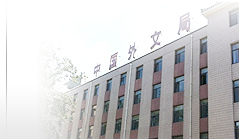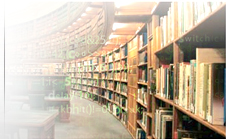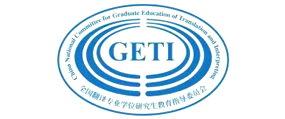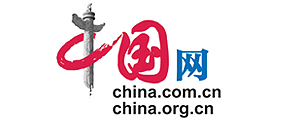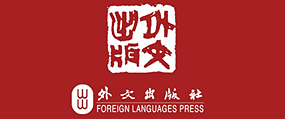译论研究
视域差与翻译解释的度——从哲学诠释学视角看翻译的理想与现实 / 朱健平 5
距离合法性视角下译者当译之本的知情选择与情感同构 / 屠国元 李静 13
国内口译研究的发展及研究走向——基于30年期刊论文、著作和历届口译大会论文的分析
穆雷 / 王斌华 19
译史纵横
接天莲叶无穷碧,映日荷花别样红——法国现当代中国文学翻译家何碧玉研究 / 陆洋 26
书刊评介
回顾、思考与展望——《Routledge翻译研究指南》评述 / 段峰 30
学人访谈
重述之道德规范 / 莫娜·贝克、安德鲁·切斯特曼/文 赵文静/译 34
翻译教学
Translation Norms and the Hystericization of Mastery / Douglas Robinson 45
“计算机辅助翻译”课程教学思考 / 钱多秀 49
译技探讨
平行文本比较模式与旅游文本的英译 / 李德超 王克非 54
浅谈经济改革新词语的英译 / 官忠明 59
古碑帖名称英译初探 / 杨晓波 63
对外汉语教材文化翻译例说 / 余心乐 68
英汉互译中的认知隐喻翻译 / 刘冰泉 张磊 71
“变异”语言翻译初探 / 崔长青 76
学术争鸣
从“第二十届韩素音青年翻译竞赛”汉译英参考译文看翻译中的“伪友”现象 / 施佳胜 79
自学之友
·译家译作·
英译汉:The American Scholar (Excerpt) (Ralph Waldo Emerson) / 曹明伦 译 83
翻译导读:谈词义之确定和表达之得体 / 曹明伦 86
汉译英:溪水(绿漪) / 史志康 译 88
翻译导读:用细腻的手法来翻译原文中重要的细节 / 史志康 90
词语选译
中国译协对外传播翻译委员会中译英研讨会
最新讨论词汇选登 93
英文摘要 94
信息广角
本刊邮购信息(12) 本刊稿约(18)
《第十八届世界翻译大会论文集》邮购信息(92)
《中国翻译》创刊30周年暨出版200期翻译研究有奖征文(96)
会讯(29、封二、封三)其它(62、75)
中文摘要
视域差与翻译解释的度*——从哲学诠释学视角看翻译的理想与现实
朱健平 湖南大学
摘 要: 翻译标准要求译者在翻译中应把握理想的解释度,翻译现实则表明,翻译中实际的解释度常会偏离理想的解释度。理想的解释度和实际的解释度均与视域差有关:目 的语文化与源语文本的视域差影响理想的解释度,译者与源语文本的视域差影响实际的解释度,译者与源语文本的视域差以及译者与目的语文化的视域差则是导致实 际的解释度偏离理想解释度的根本原因。理想的解释度是一种动态的存在,它与目的语文化和源语文本的视域差成正比。
关键词:视域差;理想的解释度;实际的解释度;翻译标准;哲学诠释学
中图分类号:H059 文献标识码:A 文章编号:1000-873X (2009)04-0005-08
距离合法性视角下译者当译之本的知情选择与情感同构*
屠国元 李静 中南大学
摘 要:距离问题是译者在翻译中一直感到困惑的问题。本文从解释哲学角度阐释了翻译中译作和原作距离的合法性,指出在距离合法性的视角下,译者应该知情选择当译之本,适当顺应,贴近选材,走进原作,与作者产生情感共鸣,生产相对完美的译作,消融距离。
关键词:距离;合法性;选择;同构;译者
中图分类号:H059 文献标识码:A 文章编号:1000-873X (2009)04-0013-06
国内口译研究的发展及研究走向*—— 基于30年期刊论文、著作和历届口译大会论文的分析
穆雷 王斌华 广东外语外贸大学
摘 要:与近年国内口译实践和教学蓬勃兴起的现状形成对比的是,作为一门新兴子学科的口译研究尚缺乏坚实的理论基础和系统的研究方法,因此有必要对其发展历史和研究路向加以厘清。本文以过去30年的期刊口译论文、著作以及历届全国口译大会上的提交论文等为数据,考察国内口译研究的发展概况,分析国内口译研究的研究数量、研究主题和研究方法。以此呈现口译研究在国内的发展态势,探讨存在的问题、研究的走向和提升的路径。
关键词:国内口译研究;考察;发展;研究走向
中图分类号:H059 文献标识码:A 文章编号:1000-873X (2009)04-0019-07
接天莲叶无穷碧,映日荷花别样红————法国现当代中国文学翻译家何碧玉研究
陆洋 南京大学
摘 要:本文是对法国现当代中国文学翻译家和汉学家何碧玉的研究,主要包括对何碧玉的语言天赋、翻译成就、翻译观、翻译出版和汉学研究工作的介绍和分析,从一个侧面反映出法国译界的现代翻译倾向和中国现当代文学在法国的接受情况。
关键词:何碧玉;中国现当代文学;翻译;法国
中图分类号:H059 文献标识码:A 文章编号:1000-873X (2009)04-0026-04
Translation Norms and the Hystericization of Mastery
Douglas Robinson University of Mississippi, USA
翻译规范教学与拉康的话语理论
摘 要:本文借鉴雅克·拉康区分的四类话语(主人话语、学院话语、分析家话语、癔症话语)以探讨翻译规范教学的一种新方法。吉登·图里的规范理论显然根植于主人话语,这不足为奇,因为大多数关于翻译的传统思维均不加批判地内化了支配思想。丹尼尔·西蒙尼于1998年 在对图里的规范理论进行批评时指出,翻译具有许多规范,而为了确定以何种规范支配自己当前的工作,职业译者往往必须对所接受的翻译任务的本质进行批判性思 考,这属于学院话语的范畴。如何使学生从不假思索地服从大多数传统理论采用的主人话语转向学院话语提倡而又是现代翻译市场所要求的那种批判性思维?本文认 为教师必须通过援用分析家话语,引导学生从主人话语阶段经由癔症话语阶段而过渡到学院话语。
关键词:翻译教学;翻译规范;雅克·拉康;主人话语;学院话语;分析家话语;癔症话语
“计算机辅助翻译”课程教学思考
钱多秀 北京航空航天大学
摘 要: 本文是北京航空航天大学外国语学院五年来开设“计算机辅助翻译”课程的教学思考。课程从理论讲解到实际操作,主要有几个板块构成:机器翻译和计算机辅助翻 译史,计算机辅助翻译的原理,广义与狭义的翻译工具,语料库与计算机辅助翻译,术语与术语库,对齐与翻译记忆,主流计算机辅助翻译工具,计算机辅助翻译与 全球化和本地化等内容。希望与大家交流,促进该课程的进一步完善和推广。
关键词:计算机辅助翻译;课程;教学;思考
中图分类号:H059 文献标识码:A 文章编号:1000-873X (2009)04-0049-05
平行文本比较模式与旅游文本的英译*
李德超 香港理工大学 王克非 北京外国语大学
摘 要:本文在Werlich文本语法的基础上,提出一种适用于非文学翻译特别是旅游英译的平行文本比较模式。文中用此模式分析和归纳中英文酒店文宣在文本惯例上呈现的不同特点,并以此指导酒店文宣的英译。作者认为,该模式有利于译文与目标语平行文本达到“文本内连贯”,有助于应用型翻译实践与教学。
关键词:平行文本;旅游英译;酒店文宣;文本连贯
中图分类号:H059 文献标识码:A 文章编号:1000-873X (2009)04-0054-05
浅谈经济改革新词语的英译
官忠明 四川大学
摘 要:中国经济改革新词语的英译问题主要有欠妥和误译,客观原因在于它们的中国特色和含义的不确定性,主观原因是译者的教育背景和知识结构。本文通过实例分析了问题的主客观原因之后,提出了四点对策建议 —— 直接采用;参照借用;谨慎选用;大胆活用(即措辞创新)。文章最后指出,中国经济改革新词语具有很强的可译性。
关键词: 经济改革新词语;英译;含义;特色;创新
中图分类号:H059 文献标识码:A 文章编号:1000-873X (2009)04-0059-04
古碑帖名称英译初探
杨晓波 浙江工商大学
摘 要:鉴于现有古碑帖译名的普遍混乱及错误,本文依据古碑帖命名原则及分类,提出具体翻译策略,并试译中国书法史上部分名碑帖名称以供参考。
关键词:中国书法;碑;帖;翻译
中图分类号:H059 文献标识码:A 文章编号:1000-873X (2009)04-0063-05
英汉互译中的认知隐喻翻译*
刘冰泉 张磊 南昌航空大学
摘 要:自亚里士多德以来,隐喻就一直被视为是一种修辞方式,直到20世纪80年代《我们赖以生存的隐喻》的出版,人们才逐步认识到它不仅仅是一种修辞方式,而且是一种认知方式和推理机制。本文介绍了隐喻作为修辞手法和认知方式的理论,重点从认知的新视角分析了隐喻的英汉互译过程,以英汉的许多习语为例,探讨了隐喻翻译的策略和方法。
关键词:隐喻;认知;翻译
中图分类号:H059 文献标识码:A 文章编号:1000-873X (2009)04-0071-05
“变异”语言翻译初探
崔长青 外交学院
摘 要:英语语言文学蕴涵着一种独特的“变异”艺术妙语,具有非理性、超常性、不规则性的特点。“变异”艺术妙语偏离语法进行组合与建构,并且超脱、违背了规范的羁绊。其艺术表现力往往比循规蹈矩的常规语言更加形象、生动,富于表现力,掌握其翻译规律对于翻译教学意义重大。
关键词:变异;翻译
中图分类号:H059 文献标识码:A 文章编号:1000-873X (2009)04-0076-03
从“第二十届韩素音青年翻译竞赛”汉译英参考译文看翻译中的“伪友”现象
施佳胜 暨南大学/上海外国语大学
摘 要:“伪友”是指两种语言中形式相同或相近但意义不同、或字面意义相同而实际意义不同的词语或表达。本文主要从“第二十届韩素音青年翻译竞赛”汉译英参考译文看英语和汉语中的“伪友”现象。
关键词:伪友;意义;韩素音青年翻译竞赛
中图分类号:H059 文献标识码:A 文章编号:1000-873X (2009)04-0079-04
CONTENTS
Horizon Gaps as the Determinant of Interpretive Degree in Translation: A Perspective from Philosophical Hermeneutics / Zhu Jianping 5
Legitimate Choice of SL/TL Distance in Translation / Tu Guoyuan & Li Jing 13
Interpreting Studies in China: A Journal Articles-based Analytical Survey / Mu Lei &Wang Binhua 19
Isabelle Rabut as a Translator of Modern Chinese Literature / Lu Yang 26
Translation Norms and the Hystericization of Mastery / Douglas Robinson 45
Pedagogical Reflections on the Design of a Course in Computer-aided Translation / Qian Duoxiu 49
A Model for Comparing Parallel Texts and Its Application in the English Translation of Chinese Tourist Brochures / Li Dechao & Wang Kefei 54
C-E Translation of Special Terms for China’s Economic Reforms / Guan Zhongming 59
Translating Titles of Ancient Chinese Calligraphic Works / Yang Xiaobo 63
E-C Translation of Cognitive Metaphors / Liu Bingquan & Zhang Lei 71
On “Semantic Changes” and Translation / Cui Changqing 76
Beware of “False Friends” in Translation / Shi Jiasheng 79
E/C Translation Practice: The American Scholar(Excerpt) ( Ralph Waldo Emerson) / Cao Minglun 83
C/E Translation Practice: The Stream(Lu Yi) / Shi Zhikang 88
English Abstracts of Major Papers in This Issue 94
Abstracts of Major Papers in This Issue
Horizon Gaps as the Determinant of Interpretive Degree in Translation: A Perspective from Philosophical Hermeneutics
by Zhu Jianping (Hunan University, Changsha, China) p.5
Abstract: In translation, the actual degree of interpretation often deviates from the ideal one required or expected by the translation criteria, and the deviation is caused by a number of horizon gaps. Since the gap between the target culture’s and the source text’s horizons determines the ideal interpretive degree and that between the translator’s and the source text’s horizons accounts for the actual degree, the gaps between the translator’s and the target culture’s horizons as well as between the translator’s and the target text’s horizons result in a deviation of actual degree of interpretation from the ideal one. The ideal degree of interpretation, as a dynamic concept, is in direct proportion to the width of the gap between the target culture’s and the source text’s horizons.
Key words: horizon gap; ideal degree of interpretation; actual degree of interpretation; translation criteria; philosophical hermeneutics
Legitimate Choice of SL/TL Distance in Translation
by Tu Guoyuan & Li Jing (Central South University, Changsha, China) p.13
Abstract: This paper looks from a hermeneutical perspective into the issue of what distance should be legitimately maintained between SL and TL in translation. It suggests that the translator decide on what deserves translating first before s/he responds sympathetically to the original text, for such an approach could best keep SL and TL at an optimum distance from each other, making it more likely to come up with a properly rendered translation.
Key words: distance; legitimacy; choice; composition; translator
Interpreting Studies in China: A Journal Articles-based Analytical Survey
by Mu Lei &Wang Binhua (Guangdong University of Foreign Studies, Guangzhou, China) p.19
Abstract: The boom of interpreting practice and pedagogy in China makes it even more urgent for interpreting studies, a newly-emerging subdiscipline lacking in a theoretical foundation and a systematic methodology, to look back and reflect on its own developmental history. Responding to the call, this paper surveys the journal articles on interpreting published over the past three decades. Analyzing these articles in terms of the central concern addressed, the theme developed and the research method adopted, the co-authors identify the existing problems and the developmental trends, and explore the approaches to improve interpreting studies in China.
Key words: interpreting studies in China; survey; development; trend
Isabelle Rabut as a Translator of Modern Chinese Literature
by Lu Yang ( Nanjing University, Nanjing, China ) p.26
Abstract: This essay devotes to the study of Isabelle Rabut as a translator of modern Chinese literature, including the introduction and analysis of her language ability, translation achievements, translation theory and her research on Chinese literature, which reflects the translation tendency and the reception of modern Chinese literature in France.
Key words: Isabelle Rabut; modern Chinese literature; translation; France
Translation Norms and the Hystericization of Mastery
by Douglas Robinson (University of Mississippi, USA) p.45
Abstract: The paper explores a new approach to teaching translation norms by looking at Jacques Lacan’s four discourses: of the master, the university, the analyst, and the hysteric. Gideon Toury’s norm theory is grounded in the master’s discourse, which is not surprising, because most traditional thinking about translation does involve the uncritical internalization of mastery. In his 1998 critique of Toury’s norm theory, Daniel Simeoni notes that there are many norms for translation, and professional translators often have to think critically about the nature of the task they’ve been given in order to establish which norm governs their current job: this would be the university’s discourse. But how to get students to move from the unthinking submission to the master that is typical of most translational discourse to the university’s critical thinking that is required by the modern translation marketplace? The paper suggests that the teacher must invoke the analyst’s discourse in order to guide students from the master’s discourse, through the hysteric’s discourse, to the university’s discourse.
Key words: translation pedagogy; translation norms; Jacques Lacan; master’s discourse; university’s discourse; analyst’s discourse; hysteric’s discourse
Pedagogical Reflections on the Design of a Course in Computer-aided Translation
by Qian Duoxiu ( Beihang University, Beijing, China) p.49
Abstract: This paper reflects on the teaching of a course in computer-aided translation at Beihang University for the past five years. Integrating theory and practice, the course has as its components a historical review of machine translation and computer-aided translation; a discussion on the principles of computer-aided translation research and development; an introduction to translation aids of various types, including corpus and computer-aided translation, terminology and termbank, alignment and translation memory. By sharing the design of this course with colleagues in the field, the author wishes that more translation programs would consider adding it to their curricula and their teaching practices would lead to further improvement on its design.
Key words: computer-aided translation; course; pedagogical; reflections
A Model for Comparing Parallel Texts and Its Application in the English Translation of Chinese Tourist Brochures
by Li Dechao (The Hong Kong Polytechnic University, Hong Kong, China)
& Wang Kefei (Beijing Foreign Studies University, Beijing, China) p.54
Abstract: Based on Werlich’s text grammar, this paper proposes a model for comparing parallel texts for non-literary translations and applies it to a comparitive study of the textual conventions governing Chinese and English tourist brochures respectively. The findings of the study are then used as guidelines for translating Chinese tourist brochures into English. As the application shows, the model is capable of making significant contributions to the achievement of “intratextual coherence” between the target text and its parallel texts in the target culture. It deserves therefore more attention from translators and teachers of translation alike.
Key words: parallel texts; non-literary translations; hotel brochures; intratextual coherence
C-E Translation of Special Terms for China’s Economic Reforms
by Guan Zhongming (Sichuan University, Chengdu, China) p.59
Abstract: The paper finds quite some C-E translations of special terms about China’s economic reforms either inappropriate or mistakenly worded. It attributes the problem to the translators’ incompetence on the one hand, and on the other to the uniquely Chinese character of the referents or the semantic fuzziness of the signs employed in these cases. To address the problem, the author proposes four strategies, namely, adoption, borrowing, selection and innovative wording, arguing that if only the right method be adopted, those terms would turn out to be highly translatable.
Key words: term; economic reform; C-E translation; implication; characteristic; innovative wording
Translating Titles of Ancient Chinese Calligraphic Works
by Yang Xiaobo (Zhejiang Gongshang University, Hangzhou, China) p.63
Abstract: Widespread confusion and arbitrariness are currently haunting the translation of the titles of ancient Chinese calligraphic works. To address such a sorry state of practice, this paper proposes and exemplifies some applicable strategies formulated on the basis of classical principles for naming and classifying bei and tie.
Key words: Chinese calligraphy; bei; tie; translation
E-C Translation of Cognitive Metaphors
by Liu Bingquan & Zhang Lei (NanChang Hangkong University, Nanchang, China) p.71
Abstract: Metaphor had been regarded as a mere rhetorical means until the 1980s, when the publication of Metaphor We Live By enabled us to see it for the first time as a cognitive method and a mechanism for reasoning as well. Taking this new understanding as its point of departure, this article analyzes the process of metaphor translating, discusses the strategies and methods for this endeavor, and illustrates its conclusions with examples in idiom translation.
Key words: metaphor; cognitive; translation
On “Semantic Changes” and Translation
by Cui Changqing (China Foreign Affairs University, Beijing, China) p.76
Abstract: English language and literature features a special linguistic phenomenon called “semantic change,” with irrationality and abnormality as its defining characteristics. Deviating from traditional grammatical structures and conventional usages, this way of using language renders it more colorful, vivid, picturesque and expressive. A proper command of the strategies for effecting semantic changes is crucial to college-level teaching of translation.
Key words: semantic change; teaching of translation
Beware of “False Friends” in Translation
by Shi Jiasheng (Jinan University, Zhuhai, China) p.79
Abstract: The concept of “false friends” refers to the words or expressions in two languages which have the same or similar form but different meanings, or which are apparently identical but actually different semantically. This paper takes a close look at “false friends” in English and Chinese, with examples taken from the C/E reference version of the text used in the 20th Han Suyin Award for Young Translators Contest.
Key word: false friends; meaning; Han Suyin Award for Young Translators

